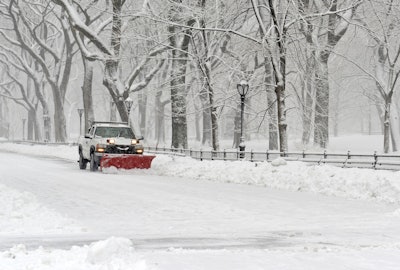

Due to the threat of lawsuits, it can be hard to find insurance companies who will cover you and when they do, the costs can be exorbitant.
Don Mahoney, founder of Mahoney Associates and East End Snow & Ice Management, presented several processes at Snow & Ice Management Association’s (SIMA) 22nd Annual Snow & Ice Symposium that can help make getting insurance for snow removal companies an easier task and save money at the same time.
“Once procedures and systems are implemented to track events, you can educate the agent and the underwriter on how you run your business,” Mahoney says. “Show them you are in the top percentile of the industry. They will be much more willing to do business with you and your rates will be significantly lower.”
Below are some of the areas you can improve upon that will make you less of a risk for insurance companies.
Contracts
Just a handshake won’t do in this day and age. You need written and executed contracts that will protect both you and your customer. Have an attorney who specializes in the snow and ice industry review the contract to make sure you are not taking on risk unknowingly.
Include in your contracts clearly defined trigger depths and site maps that outline where the snow will be stacked and what sidewalks will be shoveled, priority areas and areas that are not to be serviced. Have the client sign off and date these maps prior to servicing them. Do not let your clients dictate the level of service for the site.
If they want to specify the level of service, require them to sign your indemnification and hold harmless clauses where they take 100 percent of the liability. This will show insurance companies that you are focused on reducing your risk, as well as their exposure, while insuring you.
Make a point to show the underwriter and/or agent that your clients sign your contracts and you don’t sign theirs. When dealing with larger companies and corporations that want you to sign their contracts, never sign an un-reviewed contract from a client. Chances are, you’ll need to amend something in it to protect your business.
“Sometimes, it’s better to walk away than sign someone else’s contract,” Mahoney says.
Subcontractors
If you work with subcontractors, show the underwriter that you have subcontractor agreements in place. Provide the underwriter all the subcontractors’ certificates of insurance, which show coverage for snow and ice operations.
Many contractors have certification of insurance but may not provide the declaration page that shows they are covered for snow removal operations. If their policy does not have the coverage and there is a liability, this will fall back on you and your firm.
Discuss with your agent or underwriter that you know the difference between a subcontractor and an employee. This will help if there is a litigation, as your subcontractor will answer questions that will not lead the other attorney to classify a subcontractor as an employee. If the subcontractor is classified as an employee, the liability once again falls on your company.
Record keeping
Mahoney says that 50 percent of the snow business is production and the other 50 percent is spent dealing with record keeping and risk management.
“It is imperative that you have good records that are kept at a minimum for the statute of limitations for your state,” Mahoney says.
Show your underwriter or agent the documentation you collect to defend yourself if there is ever a claim. Too often, landscape contractors have no specifics to use in their defense when dealing with slip and fall claims.
Some of the elements you should track are copies of all contracts that are executed by both parties and copies of all completed work orders. Mahoney says your work orders should include, but aren’t limited to:
- the name of the individuals performing the service
- the services performed
- the equipment number and/or subcontractor’s name
- the date
- the time in and out
- the precipitation received if it is during an active storm
- the ground temperature at the time of service
GPS tracking of your equipment is another way to prove sites were serviced if there was a liability. Third-party certified weather reports can also help reduce your liability by proving what weather was happening at the time.
It is encouraged to have an area where the individuals can make notes as well such as if there is a car parked in the way of a service area, so they can have information on why a certain area wasn’t able to be serviced at the time.
Mahoney says it’s important to have all of this data backed up on a hard drive off site or in the cloud in case it is lost on your computer somehow.
Safety
Having a formal safety program is one way you can show underwriters and agents your company’s commitment to safety.
Mahoney suggests that when an agent wants to write your business, say they are welcome to create a quote, but only after they have come and toured your facilities.
“At that point, make sure you have a presentation prepared for them showing them your record keeping, site maps, safety procedures and contracts, etc.,” he says. “This will demonstrate your professionalism and dedication to risk management.”
Some of the things to highlight on this tour are your employees wearing the proper PPE, your safety records and the proactive efforts you take to reduce your liability.
Show the underwriter that you are selective in what contracts and clients you take on and how you do liability risk assessments when looking at a site.
If you have had any claims in the past, share these as well and show how you minimized your liability by doing the right things.
Mahoney advises getting a minimum of three to four quotes from A-rated insurance companies so you have two or three solid quotes to choose from.











